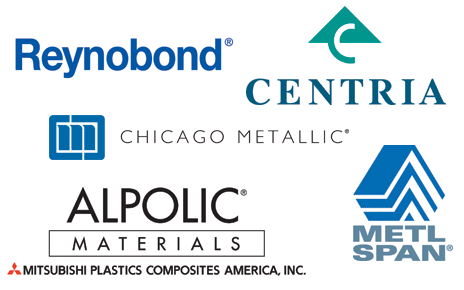Innovative Metal Solutions for the Built Environment
Metals and Sustainability
The Leadership in Energy and Environmental Design (LEED) green building certification program, developed by the U.S. Green Building Council (USGBC), is a point-based system. LEED credit requirements cover the performance of materials in aggregate, not individual product performance.
Metals are highly sustainable and recyclable. Applicable LEED categories, credits and points vary by product and manufacturer. Most building product manufacturers provide detailed information on their websites describing LEED credits and points associated with their products and materials. LEED credits and points are available in the following categories:
- Sustainable Sites (SS)
- Water Efficiency (WE)
- Energy and Atmosphere (EA)
- Materials and Resources (MR)
- Indoor Environmental Quality (IEQ)
- Innovation in Design (ID)
- Regional Priority
A summary of metal sustainability features includes:
- Aluminum composite panels can contribute to LEED points in the Innovation in Design category, in the Materials and Resources section. Aluminum composite panels are a composite material manufactured using coil-coated aluminum over a polyethylene core. The aluminum skins are 90 percent post-industrial recycled material.
- Metal roofs are virtually 100 percent recyclable, allowing for reduced landfill mass, and are typically comprised of 25 to 35 percent post-consumer recycled steel.
- Insulated metal panels may help satisfy requirements for these LEED categories: Sustainable Sites, Water Efficiency, Energy and Atmosphere, Materials and Resources, Indoor Environmental Quality, Innovation in Design.
- Metal ceilings, including aluminum, are 100 percent recyclable at the end of their useful life. The recycled content range for both post-consumer and post-industrial is 25-90 percent.
Conclusion
Metal materials and products provide owners and occupants with high-performance building envelopes and interior environments which are safe, sustainable, and cost-efficient to operate.
Innovative research and ongoing development of proven building industry technologies has led to titanium dioxide coil-coated aluminum architectural panels which self-clean buildings while reducing air pollutants and cleaning costs; and aluminum ceiling systems that protect building occupants from fire, seismic, and wind load forces. Insulated metal roof and wall panels provide air, water, thermal, and vapor protection in a single component and lower year-round building energy consumption. Finally, these multi-functional metal products are engineered to meet rigorous U.S. performance standards, which cannot be said of all imported metal building products.









